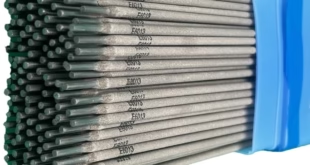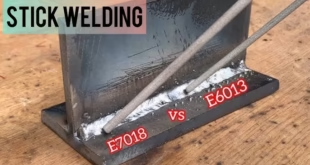Classification of Materials Based on Composition
Introduction:
Welding is a process of joining two or more materials using heat, pressure, or a combination of both. It is an essential process in various industries, including construction, automotive, aerospace, and manufacturing. However, welding can be challenging, and selecting the right materials for welding is crucial to ensure a strong and durable joint. Material classification is a standardized way of categorizing materials based on their composition, properties, and behavior during welding. In this context, this article explains the importance of material classification in welding and provides a brief overview of material classification based on composition.

Importance of Material Classification in Welding:
Material classification is a crucial aspect of welding as it helps in selecting the right materials, welding techniques, and consumables for achieving high-quality joints. Different materials have different properties and behave differently during welding. Therefore, it is essential to categorize materials based on their composition and properties to select the appropriate welding technique and consumables. Material classification also helps in reducing the risk of welding defects, such as cracking, porosity, and distortion.
Brief Overview of Material Classification Based on Composition:
Materials can be classified into various groups based on their chemical composition, which includes carbon steels, alloy steels, stainless steels, non-ferrous metals, and other specialty materials. Carbon steels are the most common group of materials used in welding and are classified based on their carbon content. Low carbon steels are easy to weld and are suitable for general-purpose welding applications, while high carbon steels are harder to weld and require preheating and post-welding treatments.
Alloy steels contain additional elements such as chromium, molybdenum, and nickel, which improve their mechanical properties and resistance to corrosion. They are classified based on their alloy content and are commonly used in high-stress applications. Stainless steels are a group of steels that contain at least 10.5% chromium and are highly resistant to corrosion. They are classified based on their microstructure and can be austenitic, ferritic, or martensitic.
Non-ferrous metals such as aluminum, copper, and titanium have different properties than ferrous metals and require specific welding techniques and consumables. They are classified based on their composition and properties. Other specialty materials, such as ceramics, polymers, and composites, also have specific welding requirements and are classified accordingly.
Classification of Metals based on Composition
The classification of metals based on composition is a way of categorizing metals based on their chemical composition. This system divides metals into different groups based on their composition, which affects their properties and potential uses. The following are the main categories of metals based on their composition:
Ferrous Metals
Ferrous metals are those that contain iron as their main constituent element. These include steel, cast iron, and wrought iron. Ferrous metals are widely used in construction, manufacturing, and engineering due to their strength, durability, and ability to withstand high temperatures.
Non-ferrous Metals
Non-ferrous metals do not contain iron as a significant constituent element. These metals have different properties and characteristics, making them suitable for a wide range of applications. Some common non-ferrous metals include aluminum, copper, lead, zinc, nickel, and tin.
Aluminum Alloys
Aluminum alloys are a type of non-ferrous metal that is made by adding other elements to pure aluminum. These alloys have excellent strength-to-weight ratios and are used in a variety of applications, including aerospace, automotive, and construction.
Copper Alloys
Copper alloys are a type of non-ferrous metal that contains copper as the primary constituent element. These alloys are known for their excellent electrical conductivity and thermal conductivity, making them ideal for use in electrical and heat transfer applications. Some common copper alloys include brass, bronze, and cupronickel.
Titanium Alloys
Titanium alloys are a type of metal that contains titanium as the primary constituent element. These alloys are known for their high strength-to-weight ratios, corrosion resistance, and biocompatibility, making them ideal for use in aerospace, medical, and military applications.
Nickel Alloys
Nickel alloys are a type of metal that contains nickel as the primary constituent element. These alloys have excellent corrosion resistance, high-temperature strength, and are used in a variety of industries, including chemical processing, power generation, and aerospace. Some common nickel alloys include Inconel, Monel, and Hastelloy.
Classification of Polymers based on Composition
Polymers can be classified based on their composition into three main categories: thermoplastics, thermosets, and elastomers.
Thermoplastics: Thermoplastics are a class of polymers that become soft and pliable when heated and solidify when cooled. They can be melted and reformed multiple times without altering their chemical structure. Thermoplastics are usually linear or branched polymers with a high molecular weight. Some common examples of thermoplastics are polyethylene, polypropylene, polystyrene, PVC, and nylon.
Thermosets: Thermosets are a class of polymers that undergo a chemical reaction when heated, which causes them to harden and become rigid. Once they are set, they cannot be remelted or reshaped. Thermosets are usually cross-linked polymers that are highly resistant to heat, chemicals, and mechanical stress. They are used in a variety of applications, including composites, adhesives, and coatings. Some common examples of thermosets are epoxy resins, phenolic resins, and polyurethanes.
Elastomers: Elastomers are a class of polymers that have high elasticity and can return to their original shape after being stretched or deformed. They are usually cross-linked polymers that have a low modulus of elasticity and high deformation ability. Elastomers are used in a wide range of applications, including gaskets, seals, and tires. Some common examples of elastomers are natural rubber, synthetic rubber, and silicone rubber.
Classification of Ceramics based on Composition
Ceramics can be classified based on their composition into two main categories: traditional ceramics and advanced ceramics.
Traditional ceramics:
Traditional ceramics are made from naturally occurring raw materials such as clay, feldspar, and quartz, and are processed using traditional techniques such as molding, drying, and firing. They are typically composed of a combination of metallic and non-metallic elements, and are often used for household items such as pottery, bricks, and tiles. Traditional ceramics are generally not as strong or durable as advanced ceramics, but they are less expensive and easier to produce.
Advanced ceramics:
Advanced ceramics, also known as engineering ceramics, are made from synthetic materials and are processed using advanced techniques such as sintering, hot pressing, and chemical vapor deposition. They are composed of non-metallic elements such as oxides, nitrides, and carbides, and are often used in high-performance applications such as aerospace, electronics, and biomedical implants. Advanced ceramics are characterized by their high strength, hardness, wear resistance, and thermal and electrical properties.
Advanced ceramics can be further classified based on their specific composition, such as:
- Oxide ceramics: These ceramics are made from metal oxides such as alumina, zirconia, and silicon dioxide. They have excellent mechanical and thermal properties and are used in applications such as cutting tools, armor, and electronic components.
- Nitride ceramics: These ceramics are made from metal nitrides such as silicon nitride and aluminum nitride. They have high strength and hardness and are used in applications such as cutting tools, turbine blades, and heat sinks.
- Carbide ceramics: These ceramics are made from metal carbides such as silicon carbide and tungsten carbide. They have high strength and wear resistance and are used in applications such as cutting tools, armor, and abrasives.
- Composite ceramics: These ceramics are composed of a combination of two or more ceramic materials, such as oxide and carbide ceramics. They have enhanced properties and are used in applications such as aerospace, energy, and biomedical implants.
Classification of Composites based on Composition
Composites can be classified based on their composition into three main categories: fiber-reinforced composites, particulate composites, and structural composites.
Fiber-reinforced composites:
Fiber-reinforced composites are composed of a matrix material and reinforcing fibers. The matrix material can be a polymer, ceramic, or metal, while the reinforcing fibers are usually made of glass, carbon, or aramid. The fibers are embedded in the matrix material, providing additional strength and stiffness. Fiber-reinforced composites are used in a variety of applications, including aerospace, automotive, and sporting goods.
Particulate composites:
Particulate composites are composed of a matrix material and small particles, such as ceramic or metal powders. The particles are usually randomly distributed throughout the matrix, providing additional strength and stiffness. Particulate composites are used in a variety of applications, including electronic packaging, cutting tools, and dental fillings.
Structural composites:
Structural composites are composed of a matrix material and structural fibers, such as carbon or glass fibers. Unlike fiber-reinforced composites, the fibers in structural composites are aligned in a specific direction, providing directional strength and stiffness. Structural composites are used in high-performance applications, such as aerospace, defense, and high-speed transportation.
Structural composites can be further classified based on their specific composition, such as:
- Carbon fiber composites: These composites are composed of a carbon fiber reinforced polymer matrix. They are lightweight and have high strength and stiffness, making them ideal for aerospace and sporting goods applications.
- Glass fiber composites: These composites are composed of a glass fiber reinforced polymer matrix. They are less expensive than carbon fiber composites and are used in a variety of applications, including automotive and construction.
- Ceramic matrix composites: These composites are composed of a ceramic matrix and ceramic fibers. They have high-temperature resistance and are used in aerospace and power generation applications.
Importance of Material Classification in Welding
Material classification plays a crucial role in welding as it affects both the welding process and the properties of the resulting weld. Here are some of the reasons why material classification is important in welding:
Effect of material composition on the welding process:
Different materials have different physical and chemical properties, and these properties can affect the welding process. For example, some materials may be more susceptible to distortion or cracking during welding, while others may require specific welding techniques to achieve a high-quality weld. Understanding the material classification can help welders choose the appropriate welding process, equipment, and parameters to ensure a successful weld.
Impact of material composition on weld properties:
The composition of the material being welded can also have a significant impact on the properties of the resulting weld. For example, if the material being welded contains a high amount of carbon, it can lead to an increase in hardness and brittleness in the weld. Conversely, if the material contains a high amount of alloying elements, it can improve the strength, corrosion resistance, and other properties of the weld. By knowing the material classification, welders can choose the appropriate filler metal and welding parameters to ensure that the resulting weld has the desired properties.
Safety concerns:
Different materials have different safety considerations during the welding process. For example, welding certain materials can produce hazardous fumes and gases that can be harmful to welders. By understanding the material classification, welders can take the necessary safety precautions to protect themselves and others during the welding process.
FAQs
What is composition of welding material?
The composition of welding material varies depending on the type of welding process and the materials being joined. Generally, welding material consists of a filler metal that is added to the joint to help bind the two pieces together. The filler metal can be a metal alloy or a non-metallic material, such as a thermoplastic.
What are the classifications of welding?
Welding can be classified into several categories, including arc welding, gas welding, resistance welding, and solid-state welding. Each of these categories can be further subdivided into specific types of welding processes.
What is the chemical composition of weld metal?
The chemical composition of weld metal can vary depending on the type of welding process and the materials being joined. Typically, the weld metal will contain some combination of the base metals being joined and the filler metal used in the welding process.
What is welding definition and classification?
Welding is a process of joining two or more pieces of material together by heating the surfaces to their melting points and allowing them to cool and solidify, creating a bond between the pieces. Welding can be classified based on the type of energy used to create the heat required for melting.
What are the five main classifications of welded joints?
The five main classifications of welded joints are butt joint, lap joint, corner joint, tee joint, and edge joint.
What are the 8 weld types of classifications?
The eight weld types of classifications are fillet weld, groove weld, plug weld, slot weld, spot weld, seam weld, surfacing weld, and flash weld.
What is the need of classification of welding process?
The classification of welding processes is important for selecting the appropriate process for a particular application, as well as for ensuring that welding procedures are standardized and consistent.
What are the three common classifications of the welding processes used today?
The three common classifications of welding processes used today are fusion welding, solid-state welding, and brazing/soldering.
What are the three classification of welding machine?
The three classifications of welding machines are manual welding machines, semi-automatic welding machines, and automatic welding machines
Conclusion
In conclusion, material classification based on composition is important in understanding the properties and behavior of various materials, which is crucial in selecting the appropriate material for specific applications.
Polymers can be classified into thermoplastics, thermosets, and elastomers based on their composition. Ceramics can be classified into traditional and advanced ceramics. Composites can be classified into fiber-reinforced composites, particulate composites, and structural composites, and further sub-classified based on their specific composition, such as carbon fiber composites, glass fiber composites, and ceramic matrix composites.
In welding, material classification is significant as it affects the welding process, weld properties, and safety considerations. Understanding the material classification can help welders choose the appropriate welding process, filler metals, and welding parameters to ensure a successful and safe welding operation. Material classification also helps in selecting the appropriate material for specific applications, which can ultimately lead to better performance, reliability, and cost-effectiveness.
 Welding of Welders All about Welding and Welders
Welding of Welders All about Welding and Welders



